

Case Reports - Year 2009 - Volume 24 -
Reconstruction of upper eyelid with "one stage" forehead flap associated to a permanent lateral tarsorrhaphy
Reconstrução da pálpebra superior com retalho médio-frontal em tempo único associado a tarsorrafia lateral permanente
ABSTRACT
Background: The main goals in eyelid reconstruction are eye protection, reestablishment of eyelid integrity, facial symmetry and normal eyelid function. Frontal flaps have been used for this purpose due to their versatility, simplicity and because they offer a good aesthetic and functional outcome. Objective: To report a case of a patient who was submitted to reconstruction of the left upper eyelid with one stage forehead flap, tunelled in the glabellar region associated to a permanent lateral tarsorrhaphy aiming corneal protection. Case report: Male patient with blunt trauma to an acrylic plate, situated at the left fronto-orbital region after a previous surgery to treat a complex facial trauma. He's evolved with cronic inflammation and infecctious process which have resulted in severe eyelid retraction. Patient presented with cicatriccial lagophtalmus and prolonged corneal exposure, as a consequence of orbicularis oculi and eyelid levator muscles destruction; left superficial temporal artery injury and lack of protective frontal bone and roof of the left orbit. He was submitted to the left upper eyelid reconstruction with a right, one stage forehead flap, tunelled in the glabellar region associated to a permanent lateral tarsorrhaphy. Evolved with satisfactory result in an early postoperative period. Discussion: The dominant pedicle of the forehead flap is the supratroclear artery and vein, generally having a constant location. Tarsorrhaphy is a very usual procedure for the treatment of superficial ocular disorders caused by cronic corneal exposure. Conclusion: The emploied technique was suitable for the treatment of this pacient, as it has achieved corneal protection with a one stage procedure.
Keywords: Eyelids/surgery. Surgical flaps. Eye diseases.
RESUMO
Introdução: A reconstrução palpebral tem como objetivos a proteção ocular, restauração da integridade palpebral, simetria facial e retorno à função normal da pálpebra. Retalhos da região frontal têm sido utilizados com este intuito, devido à versatilidade, relativa simplicidade técnica, além de oferecer um bom aspecto funcional e estético. Objetivo: Relatar o caso de um paciente que foi submetido a reconstrução de pálpebra superior com retalho médio-frontal em tempo único, tunelizado na região glabelar, associado a tarsorrafia lateral permanente visando à proteção corneana. Relato do caso: Paciente do sexo masculino, com história de trauma contuso sobre placa de acrílico colocada após trauma de face prévio na região fronto-orbital esquerda, evoluiu com processo inflamatório-infeccioso crônico e retração palpebral. Apresentava lagoftalmo cicatricial com exposição corneana prolongada, devido à perda funcional da pálpebra superior por destruição dos músculos orbicular e levantador da pálpebra superior, lesão da artéria temporal superficial ipsilateral, ausência de proteção óssea frontal e do teto da órbita esquerda. Foi submetido a reconstrução da pálpebra superior esquerda com retalho médio-frontal contralateral, em tempo único, tunelizado na região glabelar, associado s tarsorrafia lateral permanente. Evoluiu com resultado satisfatório no pós-operatório. Discussão: O pedículo dominante do retalho médio-frontal é a artéria supratroclear e veia concomitante, possuindo, em geral, uma origem constante. A tarsorrafia é um procedimento muito utilizado no tratamento de desordens da superfície ocular causadas pela exposição crônica. Conclusão: Concluímos que esta técnica cirúrgica foi adequada no tratamento deste paciente, já que teve como resultado a proteção corneana.
Palavras-chave: Pálpebras/cirurgia. Retalhos cirúrgicos. Oftalmopatias.
A reconstrução das pálpebras tem como objetivos a proteção ocular, restauração da integridade palpebral, simetria facial e o retorno à função normal palpebral1. Para substituição dos tecidos palpebrais lesados deve-se primeiramente optar por tecidos que se assemelhem o mais possível dos originais2. Os retalhos da região frontal têm sido muito empregados com este intuito, devido à versatilidade, relativa simplicidade técnica, além de oferecer bom aspecto funcional e estético2.
O objetivo deste trabalho é relatar o caso de um paciente que foi submetido a reconstrução de pálpebra superior com retalho médio-frontal em tempo único, tunelizado na região glabelar, associado à tarsorrafia lateral permanente com caráter de proteção corneana.
RELATO DO CASO
ACSA, 54 anos, sexo masculino, natural e procedente do Maranhão, com história de trauma contuso frontal esquerdo há 4 anos, que evoluiu com exposição progressiva de placa de acrílico local (devido a cranioplastia prévia por trauma), abscesso e secreção local com acentuada retração palpebral (Figura 1). Foi realizada a retirada da placa de acrílico pela equipe de neurocirurgia e fechamento primário da pálpebra superior esquerda. O paciente apresentou-se à equipe de cirurgia plástica com lagoftalmo cicatricial e exposição corneana prolongada devido a intensa retração da pálpebra superior, duas úlceras de córnea com déficit visual, perda funcional da pálpebra superior (lesão completa do músculo levantador da pálpebra superior e parcial do músculo orbicular), reflexo de Bell presente, lesão da artéria temporal superficial esquerda e ausência de proteção óssea frontal e do teto da órbita ipsilateral (Figura 2).
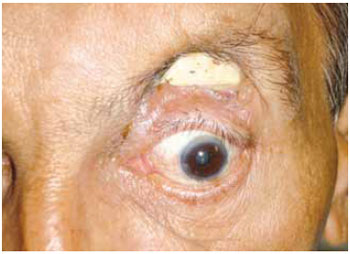
Figura 1 - Exposição da placa de acrílico, com retração palpebral acentuada.
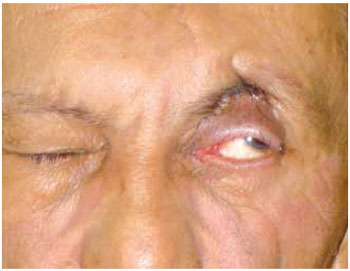
Figura 2 - Aspecto após retirada da placa de acrílico.
Foi realizada correção da retração palpebral superior esquerda empregando-se retalho médio-frontal pediculado na artéria supratroclear direita (contralateral), em tempo único, tunelizado na região glabelar, associado a tarsorrafia lateral permanente. A tarsorrafia foi realizada fixando as pálpebras superior e inferior, lateralmente, com náilon 6-0 e placas de silicone medindo 3x3 mm (Figuras 3 a 7). Apresentou área de congestão venosa na região glabelar, que regrediu no primeiro dia pós-operatório.
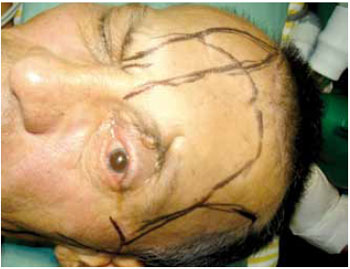
Figura 3 - Marcação do retalho mediofrontal direito.
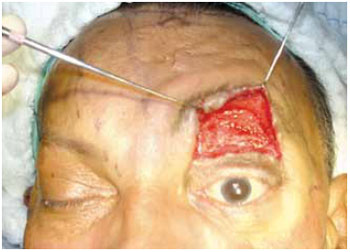
Figura 4 - Descolamento palpebral superior com exérese de tecido fibrótico.
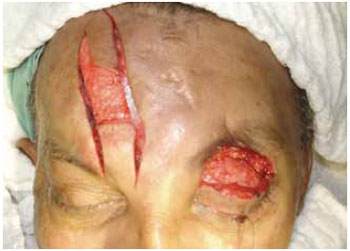
Figura 5 - Retalho mediofrontal confeccionado com desepidermização de porção central que será tunelizada.
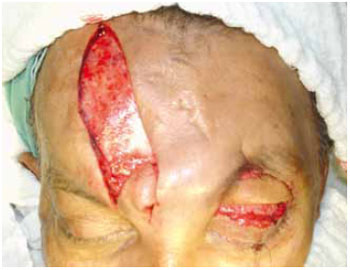
Figura 6 - Posicionamento final do retalho.
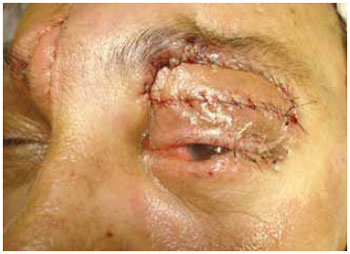
Figura 7 - Tarsorrafia lateral com fixação com nylon 6-0 e placas de silicone.
O paciente evoluiu bem, sem intercorrências, com resultado estético satisfatório e proteção ocular adequada (Figura 8).
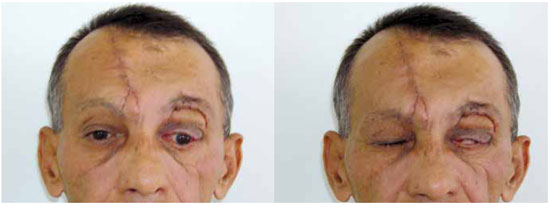
Figura 8 - Pós-operatório de 1 semana, com proteção corneana adequada.
DISCUSSÃO
Existem diversos retalhos empregados para a reconstrução da pálpebra superior, entretanto quando a perda de substância é praticamente total, as opções ficam restritas3,4. As primeiras descrições do retalho médio-frontal ocorreram na Índia, 2000 anos aC (denominado retalho indiano), sendo descrito inicialmente para reconstrução nasal1,3,5,6. Trata-se de um retalho localizado na região frontal mediana, cujo pedículo dominante é composto pela artéria supratroclear e veia concomitante4,5. O retalho não pode ser excessivamente largo pois, em geral, deve permitir o fechamento primário da área doadora e seu comprimento é limitado pela linha de implantação capilar2,5. Tal limitação pode ser contornada posicionando-se o retalho obliquamente na região frontal5. Este retalho é usado, principalmente, para reconstrução nasal, orbital e das sobrancelhas5,6. No paciente em questão, a largura do retalho foi de 2 cm, o que permitiu o fechamento primário sem complicações. Quando a área doadora é fechada primariamente sob tensão, pode ocorrer distorção das sobrancelhas5. A artéria supratroclear possui geralmente uma origem constante6,7, emergindo da órbita ente 1,7 e 2,0 cm da linha mediana, passando superficial ao músculo corrugador e profunda aos músculos orbicular e frontal. Passa medialmente à sobrancelha e atravessa o músculo frontal, ascendendo pelo subcutâneo da região frontal 1,5 a 2,0 cm da linha mediana6.
A tunelização tem como desvantagem a possível congestão vascular e abaulamento glabelar, que se resolveram espontaneamente no decorrer do pós-operatório8. Neste caso, o retalho médio-frontal foi realizado em um tempo cirúrgico, não houve alteração da linha das sobrancelhas, sendo que a extensão do retalho foi suficiente para a correção necessária, que se constituiu em grande vantagem.
A tarsorrafia tem como principais indicações a queratopatia por exposição, úlcera neurotrópica, síndrome do olho seco, síndrome de Stevens-Johnson, queimadura química e entrópio9,10. As principais complicações são triquíase, granuloma piogênico, abertura prematura da tarsorrafia e quelóide9,10. Pode ser temporária ou definitiva10, sendo comum o uso de fixação local com placas de silicone10. Neste caso foi realizada a tarsorrafia lateral permanente devido ao paciente apresentar déficit visual, lesão parcial do músculo orbicular do olho e úlceras de córnea, sendo fixadas as pálpebras lateralmente com náilon 6-0 e placas de silicone em formato quadrado de 0,3 cm.
CONCLUSÃO
Conclui-se que esta técnica cirúrgica foi eficaz neste paciente, uma vez que apresentava perda funcional e tecidual palpebral, lagoftalmo cicatricial e déficit visual, tendo sido efetuada visando primeiramente à proteção ocular.
REFERÊNCIAS
1. Verity DH, Collin JR. Eyelid reconstruction: the state of the art. Curr Opin Otolaryngol Head Neck Surg. 2004;12(4):344-8.
2. Price DL, Sherris DA, Bartley GB, Garrity JA. Forehead flap periorbital reconstruction. Arch Facial Plast Surg. 2004;6(4):222-7.
3. Jackson IT, Muquit MMK, Brazzo BG. Total upper eyelid reconstruction. Eur Plast Surg. 1999;22:186-9.
4. Kilinc H, Bilen BT. Supraorbital artery island flap for periorbital defects. J Craniofac Surg. 2007;18(5):1114-9.
5. McCarthy JG, Lorenc ZP, Cutting C, Rachesky M. The median forehead flap revisited: the blood supply. Plast Reconstr Surg. 1985;76(6):866-9.
6. Shumrick KA, Smith TL. The anatomic basis for the design of forehead flaps in nasal reconstruction. Arch Otolaryngol Head Neck Surg. 1992;118(4):373-9.
7. Kleintjes WG. Forehead anatomy: arterial variations and venous link of the midline forehead flap. J Plast Reconstr Aesthet Surg. 2007;60(6):593-606.
8. Converse JM, Wood-Smith D. Experiences with the forehead island flap with a subcutaneous pedicle. Plast Reconstr Surg. 1963;31:521-7.
9. Tzelikis PF, Diniz CM, Tanure MA, Trindade FC. Tarsorrhaphy: applications in a Cornea Service. Arq Bras Oftalmol. 2005;68(1):103-7.
10. McInnes AW, Burroughs JR, Anderson RL, McCann JD. Temporary suture tarsorrhaphy. Am J Ophthalmol. 2006;142(2):344-6.
I. Cirurgião plástico; Membro Especialista da Sociedade Brasileira de Cirurgia Plástica (SBCP).
II. Cirurgião plástico; Membro Titular da SBCP.
III. Cirurgião plástico; Membro Titular da SBCP; Regente do Serviço de Cirurgia Plástica Oswaldo Cruz.
Trabalho realizado Serviço de Cirurgia Plástica Oswaldo Cruz/Hospital Mandaqui, São Paulo, SP.
Artigo recebido: 20/10/2008
Artigo aceito: 12/1/2009


 Read in Portuguese
Read in Portuguese
 Read in English
Read in English
 PDF PT
PDF PT
 Print
Print
 Send this article by email
Send this article by email
 How to Cite
How to Cite
 Mendeley
Mendeley
 Pocket
Pocket
 Twitter
Twitter